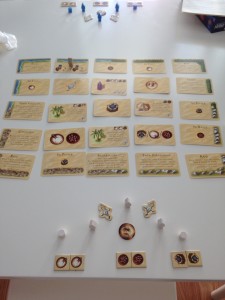This is a continuation of a piece I wrote for Stigma Fighters in July about my struggle with anxiety. The response to that column was so positive that I wrote some more about what my life as someone with anxiety has been like. Thank you all for your kind words and support.
I was a nervous kid. That gets chalked up to all kinds of things – someone being shy, nerdy, socially awkward – but in my case, it was brain chemistry, exacerbated by the fact that I was a year younger than all of my classmates, a year less mature both physically and emotionally. That in turn meant that I didn’t have size or athletic ability on which to fall back – I wasn’t blessed with any kind of athletic skills anyway, although I didn’t learn the reason for that until my daughter was born with an inborn error of metabolism – and I was always a step behind everyone in my understanding of behavior and social norms. All of that, and it’s a lot, would have added up to a rough ride on the social side of the equation, made even worse by the added scrutiny that came with being a good student whom everyone knew as the kid who skipped first grade.
But no one ever seemed to grasp that my nervousness was more than just nerves, although maybe at the time, the late 1970s and eary 1980s, that wasn’t even something people would look for. They weren’t going to give a kid Valium, although Lord knows it might have helped. So instead, I was just unhappy a lot. I had friends, and I did have fun at school sometimes, but I was always much happier outside of the school calendar. My daughter can’t wait for school to start again; I dreaded the arrival of September the way I now dread the arrival of winter. School meant being put in situations over which I had little or no control, and I had absolutely no coping skills to handle that at the time.
I have memories of social anxiety going all the way back to preschool, and they become more frequent and more acute as early as second grade. Jumping into any grade from outside the school would have been easier, but moving from kindergarten, where I had made many friends (some of whom I’m still in touch with, one of many blessings of social media and the way the passing of time smooths over a lot of rough edges), straight to second grade, where I was immediately labelled as the kid who skipped a grade, was difficult. I didn’t feel academic pressure; I probably could have kept going, and there was a later discussion about skipping me another grade that my parents wisely shot down. Had that happened, I would have graduated high school a few weeks after my 16th birthday, and I don’t think it’s an exaggeration to say I was not emotionally strong enough to survive what that would have entailed. Doogie Howser might have made for a cute plot point on television, but that would be a shitshow in real life.
Acquiring those labels, and the associated attention from teachers who knew that I’d been singled out for different treatment by the school’s administration, didn’t invoke rough or mean treatment from other kids; I don’t think I got it any worse than anyone else did, at least. But being different, and knowing that everyone else knows you are different, carries its own kind of pressure, one that I placed on myself. I wore every awkward or unpleasant social interaction as an open wound. I became increasingly hesitant to try anything new or different socially, something that lasted more or less until my junior year of high school. If I didn’t do anything different, I could stay out of the center of attention, and that was more or less my goal, because I was always convinced that everyone’s eyes were on me.
I say “more or less” because I didn’t view all types of attention as equally painful. Doing well in class was fine; it was almost expected of me, and I know I expected it of myself. I hated not knowing the answer, but because I was always a self-starter when it came to learning, reading anything I could get my hands on in my spare time, it wasn’t a frequent problem for me. (That said, I do remember my sixth-grade math teacher, a lecherous man whom I’ll call Mr. J, enjoying a laugh at my expense by because I gave the answer “subtraction” when he wanted “difference.” That was 31 years ago, and I remember it well enough to tell you where I was sitting in the room when it happened, and turning to the left to see Phil, a neighbor and sometime friend, mocking me for it. I should really have been able to let go of that memory by now, but it is mine for life.)
Instead, my anxiety – not that I understood it as such at the time – emerged outside of the classroom. I watch my daughter now, and I see so clearly how she has what I lacked, and how much better off she’ll be in life for it. She can walk into any situation and introduce herself, make a friend, and take off to play. She’s fearless like that, despite being the child of two parents who’ve fought anxiety, and when I see her do it, I’m beyond proud – I admire her for it. Even today, it is a real effort for me to go into any group of people I don’t know and do anything more than stand at the edge and listen. I can’t even tell you what I’m afraid of anymore; the behavior is so ingrained at this point that it’s no longer about fear or anxiety over some specific outcome. I am anxious, full stop.
Third grade, age 8, turned out to be the tipping point for me, although in this case I don’t remember any specific incident or even series of incidents that pushed me over the edge. For whatever reason, and there may not have been one, my anxiety began to wreak havoc on my stomach, to the point where I had to go home for lunch most days because I was getting sick for no apparent reason. I’m still not sure why it happened, but the fact that the symptoms that appeared 33 years ago went away almost immediately when I started taking an SSRI (escitalopram) in 2012 tells me that it had to be mental or emotional in origin. I have other GI issues – when a gastroenterologist tested me in 2011 for lactose intolerance, my test results were so bad he started laughing – but no treatment or medicine worked until I started taking medication for my anxiety. And suddenly my stomach became somewhat predictable again. Part of me wants to rage at every doctor I saw about my stomach troubles over the last twenty years for failing to even consider the possibility that the cause was psychological, but most of them just fall under the axiom that a man with a hammer sees everything as a nail.
I think back on that year as the place where my life forked. Had that happened today, it’s at least possible that my symptoms would have been recognized as anxiety, or at least as a mental illness rather than a physical one, and I might have received treatment – medication, therapy, both – that would have stopped it in its tracks. Instead, it developed into the condition that dictated my life, creating a vicious circle that made me into someone whose answer to anything was always “no.” I didn’t want to go to strange places, because I might be put in uncomfortable social situations – and might get sick. I didn’t want to go to a new restuarant because I might get sick – and I found that, even just having to spend more time in the bathroom, deeply embarrassing.
As hard as dealing with the emotional and physical aspects of anxiety was, I think I was most hurt by seeing the gulf between myself and close friends when it came to just being comfortable with who I was. I could watch friends be at ease in social situations – with guys, with girls, whatever – and understand exactly what they did that I didn’t, but I couldn’t emulate them. You can’t fake feeling safe in your own skin.
It did get better, eventually, although it took a lot of effort on my own part and a good bit of luck as well. I knew to some extent that I was high-strung, at least enough that it was creating a barrier between myself and many of my friends and even classmates. For reasons I’m not even sure I understand now, I decided that the way to get around that was … to be funny. Whether I succeeded in that endeavor is both another question and a story for another day, but it was nothing more than a band-aid on the suppurating wound of anxiety that ruled most of my life. It did, however, lead me to a group of friends that made my last year of high school by far the best year I had in school at any level, and I’m still close to many of those friends even today.
But the fundamental problems – the anxiety, and the way it discouraged me from being social the way most people my age were – persisted into my 30s, with some facets lingering until I finally got treatment two years ago. Habits I learned as a child – avoiding situations that might make me uncomfortable – came to dominate my life. I still don’t like to ponder the cost.






